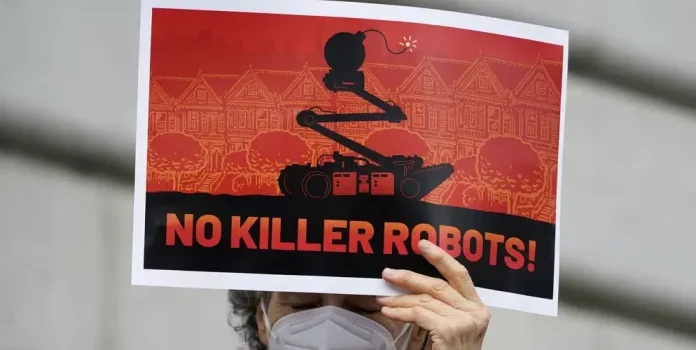(Mark Pellin, Headline USA) In response to fierce public backlash, the San Francisco Board of Supervisors this week reversed course on its decision to approve the use of killer robots deployed by police.
In a city besieged by soaring crime rates, violent open-air drug markets and roving gangs, San Francisco Police Chief William Scott ripped city leaders for caving to a public outcry that painted what he claimed was a misleading, hysterical version of the killer robot program.
In a statement to Bay Area news station KRON4, Scott said the false narrative “is a distraction from the real issue, which is having the tools necessary to prevent loss of innocent lives in an active shooter or mass casualty incident.”
The board of supervisors originally approved a measure that would have allowed robots to “only be used as a deadly force option when risk of loss of life to members of the public or officers are imminent and outweigh any other force option available to SFPD.”
Police wanted official permission to use its robots to hunt and kill targeted suspects that have been deemed too dangerous to be pursued by humans. Officials said the department’s existing 17 robots, which are remote-controlled, had never been used to attack anyone.
None of which seemed to matter when headlines of killer police robots sparked public protests, which ultimately led city officials to revoke the robots’s licenses to kill.
“I do not think removing the immediacy and humanity of taking a life and putting it behind a remote control is a reasonable step for a municipal police force,” wrote supervisors board member Gordon Mar. “I do not think robots with lethal force will make us safer, or prevent or solve crimes.”
Officers working the front lines in a city that has devolved into a cesspool of crime and daily violence disagreed.
“We want to use our robots to save lives – not take them,” Scott said. “To be sure, this is about neutralizing a threat by equipping a robot with a lethal option as a last case scenario, not sending an officer in on a suicide mission.”

